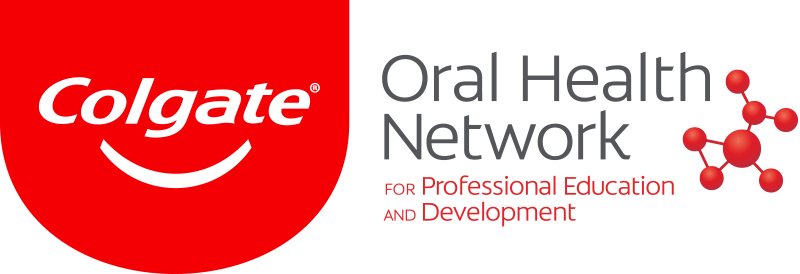ATLANTA, U.S.: When it comes to oral health, creating good habits in children can have lasting positive impacts later in life, however as with most things, anything done in excess can also be dangerous. In a recent study, researchers from the Centers for Disease Control and Prevention (CDC) analyzed 2013–2016 data on different patterns of toothbrushing and the amount of toothpaste used by 5,157 children and adolescents aged between 3 and 15 years, with results revealing many used more toothpaste than is recommended.
In the study, led by oral health specialist Dr. Gina Thornton-Evans from the National Center for Chronic Disease Prevention and Health Promotion, the researchers looked at data from the National Health and Nutrition Examination Survey, from which they established patterns of toothbrushing and toothpaste use by analyzing parents’ or caregivers’ responses to a specific series of questions. These included when the child started to brush his or her teeth, the age at which the child began to use toothpaste, the frequency of toothbrushing each day, and the amount of toothpaste currently used or used at the time of the survey.
According to the results, 38 percent of children aged 3–6 years used more toothpaste than is recommended by CDC and other professional organizations. In addition, nearly 80 percent of children aged 3–15 years started brushing later than recommended.
However, the CDC noted that there were at least three study limitations to be considered. First, the measures used were based on parents’ self-report, so reporting bias was possible; second, the question about the amount of toothpaste used focused on current use and therefore might have overestimated the amount used at younger ages; and third, the type of toothpaste (fluoride versus nonfluoride) was not specified.
Nonetheless, the CDC, along with the American Academy of Pediatrics (AAP), have begun collaborative work to develop messages targeted at pregnant women and new mothers regarding recommended toothbrushing practices. The CDC noted that “parents and caregivers can play a role in ensuring that children are brushing often enough and using the recommended amount of toothpaste.”
CDC, the AAP, the American Academy of Pediatric Dentistry and the American Dental Association recommend that children aged 3–6 years brush their teeth twice daily using a pea-sized amount of fluoride toothpaste.
The study, titled “Use of toothpaste and toothbrushing patterns among children and adolescents—United States, 2013–2016,” was published on Feb. 1, 2019, on the CDC website.
Tags:
CHICAGO, U.S.: With the overprescription of opioids causing many severe health and addiction issues in the U.S., it is imperative that dental professionals ...
CLEVELAND, U.S: The controversy over the safety of electronic cigarettes persists, and some people regard vaping as a public health epidemic. Experts have ...
SENDAI, Japan: Using the exact same dataset and an industrial 3D digitiser to identify deviations, researchers at Tohoku University Graduate School of ...
Although the dental industry in the Middle East plunged in value by more than 30% in 2020 owing to the COVID-19 pandemic, by 2023 it had rebounded so ...
DUNEDIN, New Zealand: A new study by researchers at the University of Otago Faculty of Dentistry in Dunedin has shown that the use of mercury in dental ...
MELBOURNE, Australia: In the first large-scale study to look at the oral microbiome, researchers from Murdoch Children’s Research Institute (MCRI) have ...
WARSAW, Poland: There has long been a debate around what constitutes excessive time spent on devices and the adverse health effects of this. In a new study ...
COLOGNE, Germany: Organiser of the International Dental Show (IDS) Koelnmesse has announced high registration figures for exhibitors after the official ...
CHICAGO, U.S.: Since SARS-CoV-2 is an airborne virus and very easily spreads through aerosols, dentists were believed to be at a high infection risk at the ...
NEW YORK, U.S.: Older adults with more harmful than healthy bacteria in their periodontal tissue are more likely to have evidence for amyloid beta— a key ...
Live webinar
Mon. 29 April 2024
12:30 pm EST (New York)
Prof. Roland Frankenberger Univ.-Prof. Dr. med. dent.
Live webinar
Tue. 30 April 2024
1:00 pm EST (New York)
Live webinar
Fri. 3 May 2024
1:00 pm EST (New York)
Live webinar
Tue. 7 May 2024
8:00 pm EST (New York)
Live webinar
Thu. 9 May 2024
8:00 pm EST (New York)
Live webinar
Mon. 13 May 2024
9:00 am EST (New York)
Live webinar
Mon. 13 May 2024
1:00 pm EST (New York)
Doc. MUDr. Eva Kovaľová PhD.



 Austria / Österreich
Austria / Österreich
 Bosnia and Herzegovina / Босна и Херцеговина
Bosnia and Herzegovina / Босна и Херцеговина
 Bulgaria / България
Bulgaria / България
 Croatia / Hrvatska
Croatia / Hrvatska
 Czech Republic & Slovakia / Česká republika & Slovensko
Czech Republic & Slovakia / Česká republika & Slovensko
 France / France
France / France
 Germany / Deutschland
Germany / Deutschland
 Greece / ΕΛΛΑΔΑ
Greece / ΕΛΛΑΔΑ
 Italy / Italia
Italy / Italia
 Netherlands / Nederland
Netherlands / Nederland
 Nordic / Nordic
Nordic / Nordic
 Poland / Polska
Poland / Polska
 Portugal / Portugal
Portugal / Portugal
 Romania & Moldova / România & Moldova
Romania & Moldova / România & Moldova
 Slovenia / Slovenija
Slovenia / Slovenija
 Serbia & Montenegro / Србија и Црна Гора
Serbia & Montenegro / Србија и Црна Гора
 Spain / España
Spain / España
 Switzerland / Schweiz
Switzerland / Schweiz
 Turkey / Türkiye
Turkey / Türkiye
 UK & Ireland / UK & Ireland
UK & Ireland / UK & Ireland
 Brazil / Brasil
Brazil / Brasil
 Canada / Canada
Canada / Canada
 Latin America / Latinoamérica
Latin America / Latinoamérica
 USA / USA
USA / USA
 China / 中国
China / 中国
 India / भारत गणराज्य
India / भारत गणराज्य
 Japan / 日本
Japan / 日本
 Pakistan / Pākistān
Pakistan / Pākistān
 Vietnam / Việt Nam
Vietnam / Việt Nam
 ASEAN / ASEAN
ASEAN / ASEAN
 Israel / מְדִינַת יִשְׂרָאֵל
Israel / מְדִינַת יִשְׂרָאֵל
 Algeria, Morocco & Tunisia / الجزائر والمغرب وتونس
Algeria, Morocco & Tunisia / الجزائر والمغرب وتونس
 Middle East / Middle East
Middle East / Middle East
:sharpen(level=0):output(format=jpeg)/up/dt/2024/04/Shutterstock_1017664873.jpg)
:sharpen(level=0):output(format=jpeg)/up/dt/2024/04/Treating-periodontal-disease-reduces-atrial-fibrillation-recurrence.jpg)
:sharpen(level=0):output(format=jpeg)/up/dt/2024/04/3Shape-charts-sustainable-course-with-release-of-comprehensive-sustainability-report-2023.jpg)
:sharpen(level=0):output(format=jpeg)/up/dt/2024/04/Zumax-Medical-Image-1.jpg)
:sharpen(level=0):output(format=jpeg)/up/dt/2024/04/IDEM-2024-Wraps-up-its-13th-edition-with-record-breaking-success.jpg)








:sharpen(level=0):output(format=png)/up/dt/2023/08/Neoss_Logo_new.png)
:sharpen(level=0):output(format=png)/up/dt/2013/04/Dentsply-Sirona.png)
:sharpen(level=0):output(format=png)/up/dt/2010/11/Nobel-Biocare-Logo-2019.png)
:sharpen(level=0):output(format=png)/up/dt/2014/02/Du%CC%88rr_Dental.png)
:sharpen(level=0):output(format=png)/up/dt/2014/02/EMS.png)
:sharpen(level=0):output(format=jpeg)/up/dt/2019/02/Study-finds-US-kids-use-more-toothpaste-than-recommended-1-of-1.jpg)

:sharpen(level=0):output(format=jpeg)/up/dt/2024/04/Shutterstock_1017664873.jpg)
:sharpen(level=0):output(format=jpeg)/up/dt/2017/06/Dental-Tribune-Icon.jpg)
:sharpen(level=0):output(format=jpeg)/up/dt/2019/06/US-dentists-prescribe-37-times-more-opioids-than-English-dentists-do-study-finds.jpg)
:sharpen(level=0):output(format=jpeg)/up/dt/2019/09/Burn-Injuries-Among-the-Risks-of-Using-Electronic-Cigarettes.jpg)
:sharpen(level=0):output(format=jpeg)/up/dt/2022/08/Study-finds-3D-printing-more-accurate-than-milling-when-it-comes-to-dental-crowns1.jpg)
:sharpen(level=0):output(format=jpeg)/up/dt/2024/02/Shutterstock_2127381089.jpg)
:sharpen(level=0):output(format=jpeg)/up/dt/2020/02/Study-finds-the-use-of-amalgam-in-NZ-is-rapidly-decreasing.jpg)
:sharpen(level=0):output(format=jpeg)/up/dt/2017/11/17_Dental-caries-not-gentic.jpg)
:sharpen(level=0):output(format=jpeg)/up/dt/2019/07/Excessive-computer-use-can-impact-oral-health-study-finds.jpg)
:sharpen(level=0):output(format=jpeg)/up/dt/2017/01/bcc643114fa6a22fcbfb43d9c581a2ce.jpg)
:sharpen(level=0):output(format=jpeg)/up/dt/2020/10/Less-than-1-percent-of-dentists-in-the-U.S.-affected-by-COVID-19_780-x-439.jpg)
:sharpen(level=0):output(format=jpeg)/up/dt/2021/04/Study-finds-new-evidence-that-periodontal-disease-is-linked-to-Alzheimer%E2%80%99s-disease.jpg)






:sharpen(level=0):output(format=jpeg)/up/dt/2024/04/Shutterstock_1017664873.jpg)
:sharpen(level=0):output(format=jpeg)/up/dt/2024/04/Treating-periodontal-disease-reduces-atrial-fibrillation-recurrence.jpg)
:sharpen(level=0):output(format=jpeg)/up/dt/2024/04/3Shape-charts-sustainable-course-with-release-of-comprehensive-sustainability-report-2023.jpg)
:sharpen(level=0):output(format=jpeg)/wp-content/themes/dt/images/3dprinting-banner.jpg)
:sharpen(level=0):output(format=jpeg)/wp-content/themes/dt/images/aligners-banner.jpg)
:sharpen(level=0):output(format=jpeg)/wp-content/themes/dt/images/covid-banner.jpg)
:sharpen(level=0):output(format=jpeg)/wp-content/themes/dt/images/roots-banner-2024.jpg)
To post a reply please login or register